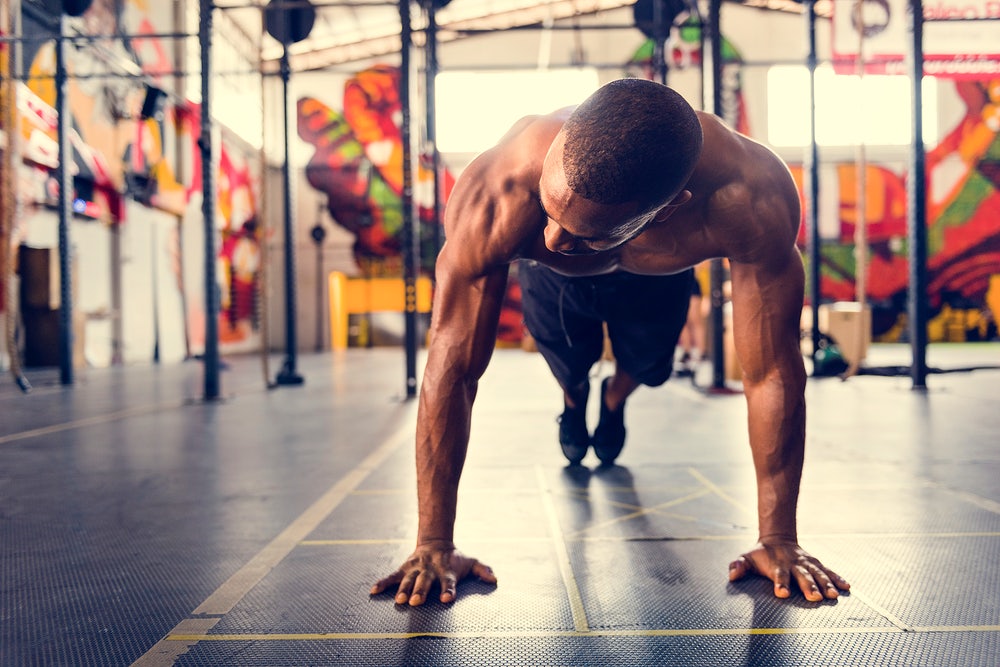
Heading Back to the Gym? You Need a New Routine!
It’s been a rough year and, depending on where you are, your gym has either opened back up or remains closed until further notice. But if your gym is open again (and congratulations if it is!), do you go back to the program you were executing back in March? Do you really think you can just kick the doors down as if you’re in a movie, walk in the weight room, and bench press the same amount of weight you were doing back in March and expect to have the same results? Think again! All your at-home bodyweight/resistance band workouts might’ve helped you burn fat and keep you in shape. But you’re still deconditioned.
Even if you didn’t lose much muscle tone, after a while the environment for muscle growth or even an increase in strength becomes less demanding. The Specific Adaptation Of Imposed Demands (SAID Principle) states that the body adapts to the demands placed on it. So you can do as many pushups, for example, as you can before homeostasis kicks in. Then you add a modality, such as a resistance band. That helps to strengthen your tendons and spark some growth. But if growth is your primary goal, then you’ll need to place more stress on the body. And that’s where the benefits of weights come in.
Full Body Training
Anyone who’s already trained under me knows that I’m a big fan of three days a week, full-body training. It’s the tried and true way for beginners to gain strength and size simultaneously and quickly. It’s also a great way to increase your heart rate and boost your metabolism, inevitably aiding in fat loss, because every major muscle group will be stimulated every time you train. And in this case, if you’re in a situation where you haven’t touched even a barbell in months, there’s no other way to rebuild a solid strength foundation for you to work with regardless of your individual goals. That’s why I developed the following nine-week routine to help you get back on track with your goals:
The Routine
Phase 1 (Weeks 1-3)
Dynamic Warm-Up (ex: The DeFranco Agile 8)
Back Extensions – 3 x 10
Squat – 5 x 5
Bench Press – 5×5
Deadlift – 1 x 5
Static Stretching for ten minutes
Phase 2 (Weeks 4 – 9)
Dynamic Warm-Up (ex: The DeFranco Agile 8)
Back Extensions – 3 x 10
Squat – 5 x 5
Bench Press – 5 x 5
Deadlift – 1 x 5/Chin Ups – 3 x 1 – failure
Static Stretching for ten minutes
Explanation
This routine, derived by two classic strength programs, Reg Park’s 5×5 and Mark Rippetoe’s Starting Strength, is to be performed three days a week. With the Squat and Bench Press, you’ll begin with just the bar. You can load the bar with 95lbs with your first Deadlift session if you’re not new to this. With the Deadlift, you can progress with 20lbs jumps each session if you’re feeling confident enough. Eventually, you’ll plateau, at which point you should decrease the jumps to 10lbs per session. And, if you feel like you need to as time goes on, don’t hesitate to decrease the weight. With squats, you can progress with 10lb jumps and eventually decrease it to 5lbs if needed, and then down to 2 1/2lbs if necessary. With the Bench Press, start with only 5lb jumps per session and if needed, decrease it to 2 1/2lb jumps per session if needed.
Use your instincts and don’t rush this. Lee Haney always said to “stimulate, not annihilate” for a reason!
Back Extensions, something I’ve written about on my site, is a great hip hinge exercise you can use to loosen your posterior chain and strengthen your lower back. Done correctly, it will work your lower back, hamstrings, and glutes. Warming up your posterior chain before a major exercise such as a squat prepares it for the lift. Don’t forget that to train your lower back is to train your core. Squatting or even Bench Pressing without properly warming up the lower back will lead to tightening, and potentially an injury.
After you’ve gotten used to Back Extensions with proper form, try adding a mini resistance band to the move. The extra tension will force your body to move faster, carrying over to a more explosive Deadlift! Once you’ve become accustomed to using a mini band, feel free to start adding dumbbells, making small, incremental increases as to avoid stalling too soon.
The first two sets of your squats and bench press sets can consist of 60% and 90% of your target weight based on the day.
You can also improvise if you feel this is too rigid. Your Deadlift sets will include four warm-up sets and just one working set. The reason for this is your lower back will be exhausted from the back extensions and the squats. I’ve realized from my own experience of performing more than one working, relatively heavy deadlift set that doing so when tired will lead to an injury. Again, the point of this is to progress as much as possible.
Starting with Phase 2 you will alternate Deadlifts with Chin Ups. So if you Deadlift on Monday, you will do Chin-Ups on Wednesday, and then you’ll Deadlift on Friday. And with the following week, you’ll alternate the two, starting Monday with Chin Ups. The reason for this is simple: you get to give your lower back a bit of a chance to recover while using that tie to build up your upper body. Don’t worry about hitting a fixed set of reps if you can’t. So long as you progress, even one complete rep is better than five sloppy reps!



